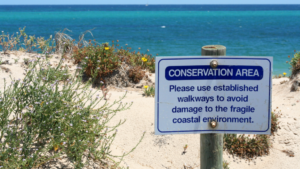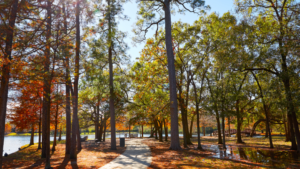Soon after taking office, the Biden-Harris administration announced its goal of conserving at least 30% of lands and waters in the U.S. by 2030 in the Executive Order on Tackling Climate Change at Home and Abroad, commonly referred to as 30×30. On May 6, federal departments of the Interior, Agriculture, Commerce as well as the Council on Environmental Quality responded to 30×30 by recommending eight core principles and priority areas for an inclusive and locally-led pathway to conserving and restoring nature in the US, in their report Conserving and Restoring America the Beautiful (“America the Beautiful Campaign”).
30×30 is landmark and the America the Beautiful Campaign is a turning point for conservation in more ways than one:
- It recognizes that the path forward to conserving natural spaces must rely on the inclusion of communities of colour and respect the sovereignty of Tribal Nations and Indigenous Peoples (Principle 2 and 4);
- It is the practical change at the federal level from ‘protection’ to ‘conservation’, thereby ingraining in the pathway the worthiness of the multidimensional financial, social, and environmental benefits that nature provides to communities;
- It identifies a collaborative approach that recognizes scientific evidence, Traditional Ecological Knowledge, and the local experience of those who know their lands and waters best will enhance the likelihood that conservation is achieved (Principles 1, 3, and 7);
- It recognizes the need to honor private property rights and use economic incentives and other market-based strategies to spur voluntary stewardship efforts (Principle 6 and 8); and
- Finally, it recognizes the crucial role that nature-based solutions (NbS) have in addressing the critical challenges of biodiversity loss and climate change (Principle 5).
The benefits of NbS – the financial, social, and environmental benefits, Triple Bottom Line (TBL) – to communities that vibrant, well functioning ecosystems can provide include but are not limited to, outdoor recreation opportunities, coastal hazard mitigation, improving public health, creating joy and connection to place, carbon sequestration, supplying clean energy, improving wildlife habitat and supporting biodiversity, among so many others.
In parallel to 30×30, the Biden-Harris administration announced potential funding, if approved by congress, that may be allocated to nature-based solutions within its American Jobs Plan – with $50 billion to safeguard critical infrastructure, defend vulnerable communities, and maximize the resilience of communities and environment by protecting and restoring nature-based infrastructure. Added to this is $10 billion to mobilize the next generation of conservation and resilience workers via a Civilian Climate Corps and $56 billion to upgrade and modernize America’s drinking water, wastewater, and stormwater systems.
A challenge for communities will be determining which projects to implement and bring about the greatest benefits for the funding allotment they will receive. These communities can leverage existing resources on NbS such as recent efforts by the Global Green-Gray Community of Practice, who in late 2020 published its Practical Guide to Implementing Green-Gray Infrastructure. This living guide is a tool for identifying, funding, financing, planning, designing, constructing, and monitoring green-gray infrastructure projects with the goal of increasing the resilience of vulnerable cities, communities, and assets. The report was written by technical experts across the world from AECOM, IUCN, Conservation International, the US Army Corps of Engineers, The Nature Conservancy, and Autocase, among others.

The forest mural wallpaper for the building wall.
Economic analysis can also add support to these resources. Specifically, cost benefit analysis (CBA) that quantifies and monetizes the benefits of nature in a common unit, dollars.
The long-term perspective of CBA allows communities to consider the value of NbS investments into the future by valuing the future effects of climate change, in today’s dollars. A key fundamental principle of economics is that scarce resources have higher demand and higher value. As such, CBA can help advocate for NbS in neighborhoods that are nature-scarce and thereby contribute to more equitable distribution and access to nature in underserved neighborhoods.
Furthermore, CBA can prioritize competing NbS by:
- Translating their benefits into a common metric – providing a consistent approach to compare projects based of merit;
- Ensuring that conservation projects selected for funding drive the greatest value in terms of not only least-cost but also biological function and the capacity to provide other social, environmental, and even financial benefits;
- Indicating which projects have the greatest return on investment; and
- Communicating with stakeholders as it translates impacts (e.g., reduced risk of flooding) into metrics people understand (e.g., $1 million in avoided damages to residents’ homes).
All this to say, is that it is with cautious optimism that the political will, financial support, and existing community expertise for the conservation of natural capital to restore biodiversity and mitigate climate change at scale may, finally, be here.
What’s next?
- Reach out to info@autocase.com for more information on how Autocase can support your NbS efforts.
- Read about our work with Miami Downtown Development Authority in the Practical Guide to Implementing Green-Gray Infrastructure (Case Study 21) that shows how a NbS investment in seawalls and living shorelines along Downtown Miami’s coast can drive $450 million in TBL benefits.
- Curious about how we quantify and monetize the TBL of NbS? Reach out to us for our white paper on using TBL-CBA for green infrastructure.


0 Comments